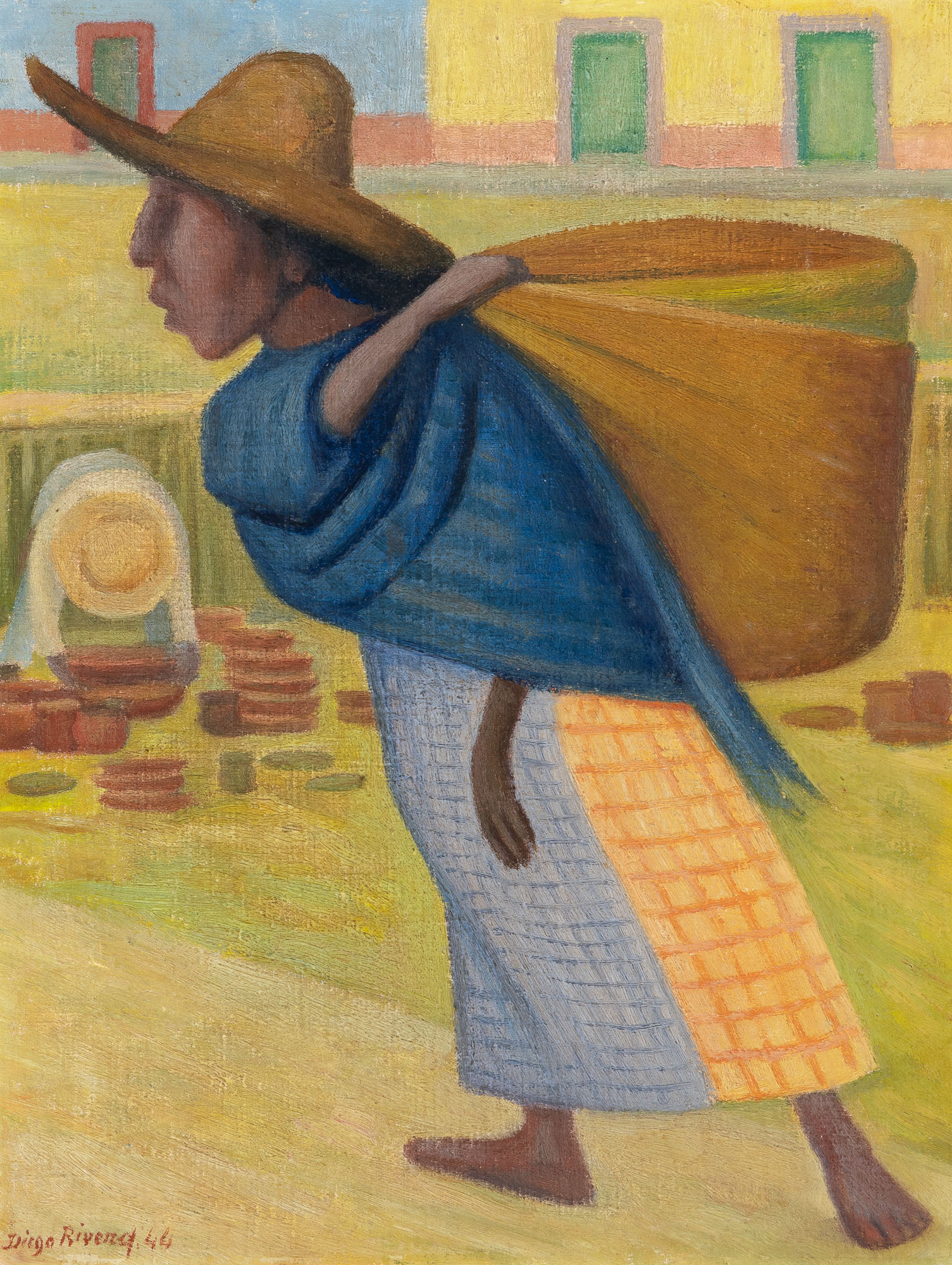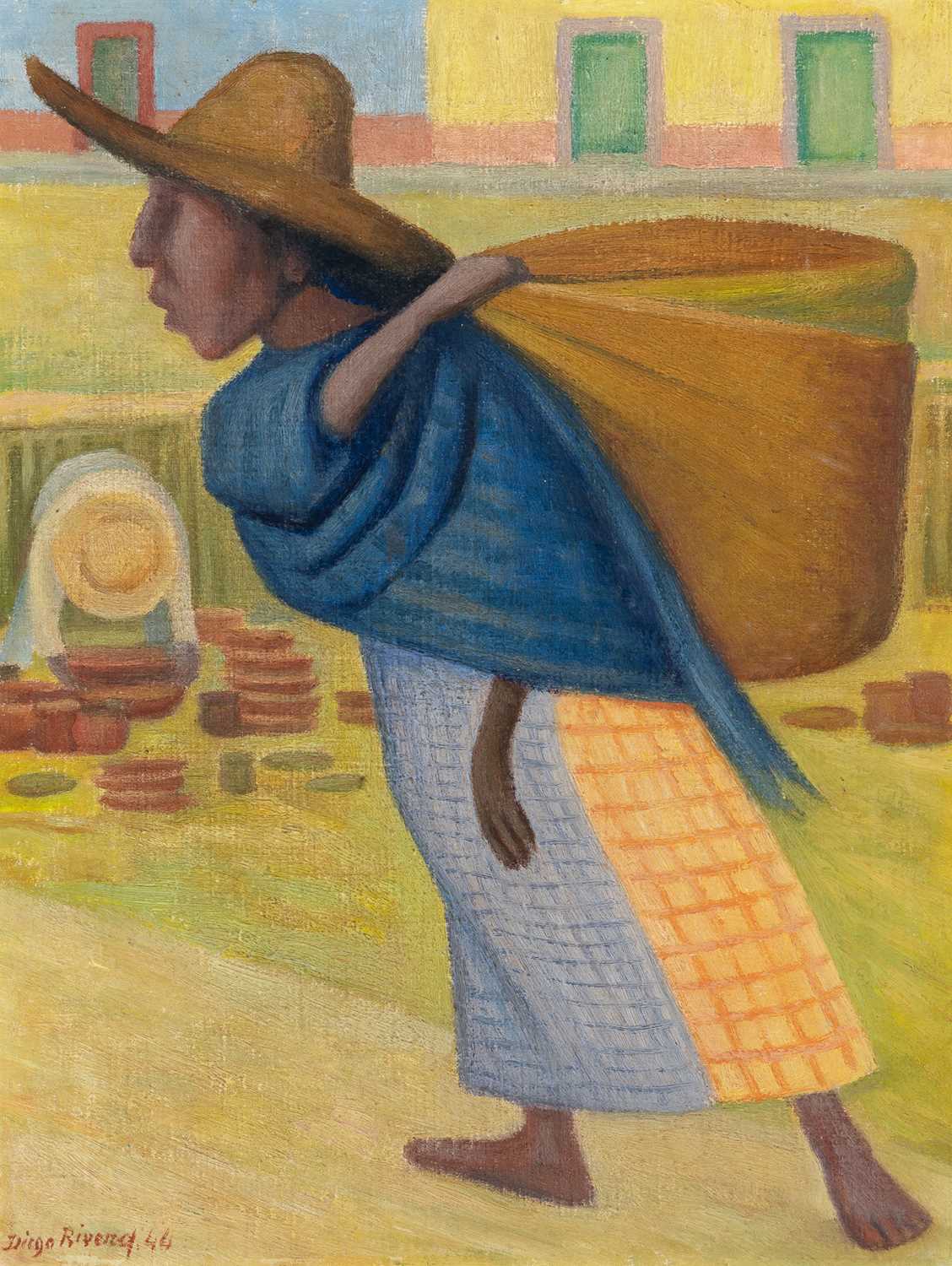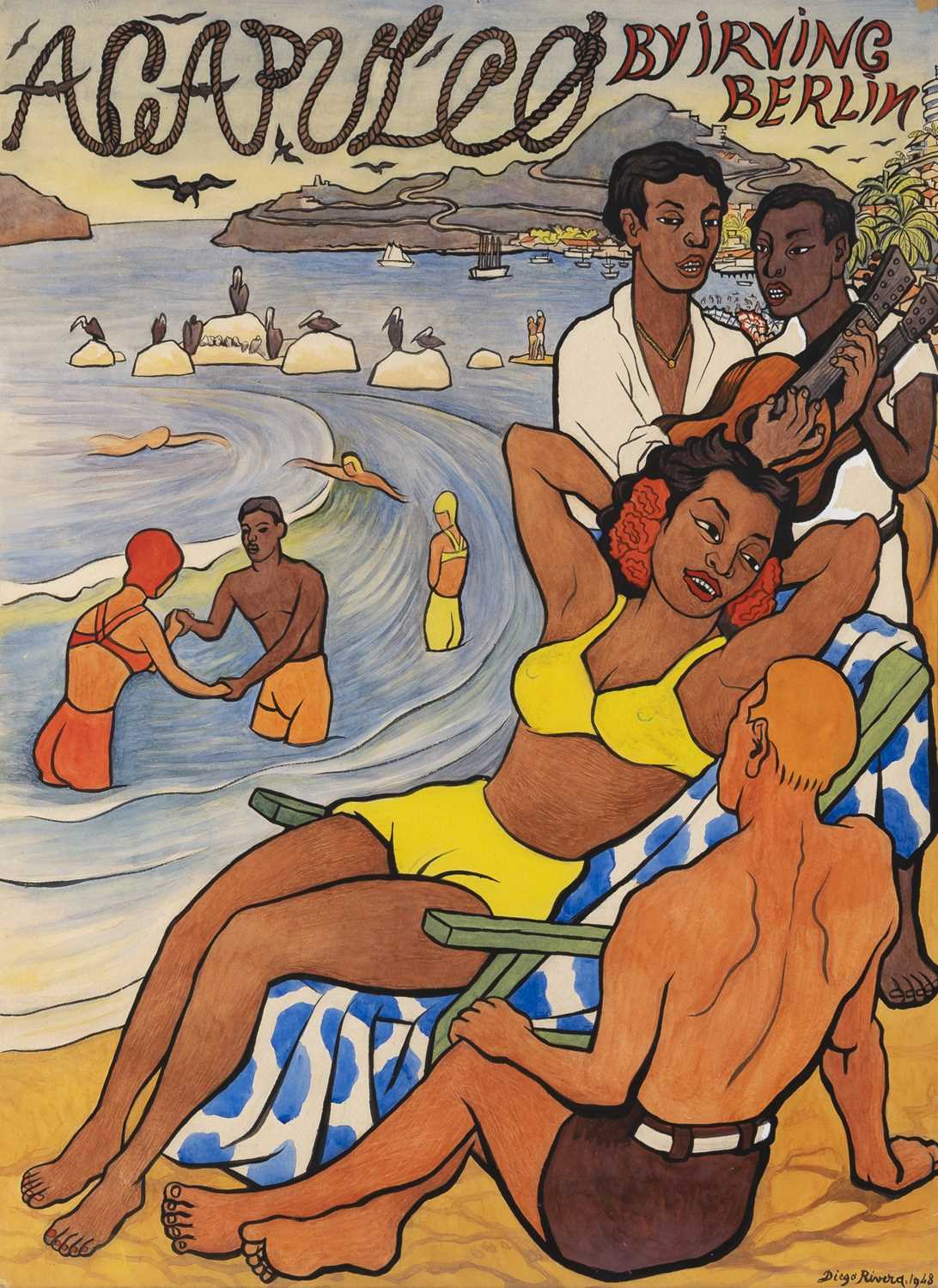
Diego Rivera
Mexican, 1886-1957
Diego Rivera was a pivotal figure in 20th-century art, celebrated for his monumental frescoes and profound influence on modern muralism. Born in Guanajuato, Mexico, Rivera trained at the Academy of San Carlos in Mexico City before furthering his studies in Europe, where he absorbed the innovations of Cubism and the traditions of Renaissance fresco painting. His return to Mexico in the early 1920s marked a turning point, not only in his own career but in the trajectory of Latin American art, coinciding with a national movement to redefine cultural identity after the Mexican Revolution.
Rivera’s large-scale murals, rich with social commentary and historical narrative, brought art into the public sphere. His works can be found in prominent institutions across Mexico and the United States, including the Secretaría de Educación Pública in Mexico City and the Detroit Institute of Arts, where his Detroit Industry Murals remain a masterwork of 20th-century public art. Rivera’s time in San Francisco also left a lasting legacy, particularly through his 1940 mural Pan American Unity, now a cornerstone of SFMOMA’s collection.
A founding member of the Mexican muralism movement alongside contemporaries José Clemente Orozco and David Alfaro Siqueiros, Rivera combined classical technique with radical political themes, giving voice to indigenous heritage, labor, and the struggle for equity. His brief yet consequential engagement with the American art scene further underscored his role as a cultural provocateur and transnational figure. Today, Rivera is recognized not only for his technical mastery and expansive vision but for his enduring influence on artists and activists worldwide.






